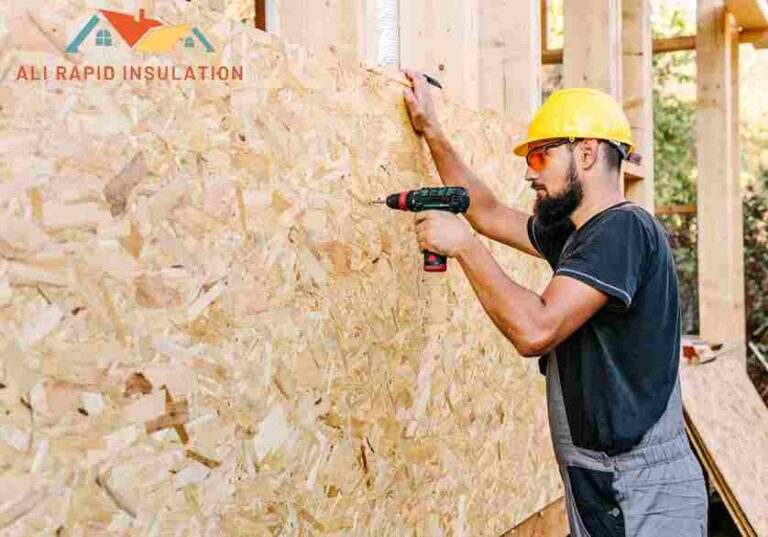All you need to know about wall insulation
If you want a healthier and more energy-friendly home, then it is obvious to consider insulating walls. In wall insulation, we have internal and external walls. Both should be insulated with minimum wall insulation batts ratings of 2.5. Approximately 20% of heat gain & loss is through the external wall, so with proper insulation, we can save the power and heating bills, and you get a better indoor climate. Statistics show that Australians spend up to 90% of their time indoors. Much of that time is at home in our own house, so it makes sense to ensure good, healthy insulation. We have made an overview of how you approach interior and exterior wall insulation insulation.
External Wall Insulation
The traditional way in Australia to insulate an external wall is by building a front wall. This means you install a new wall outside the existing wall. The new wall typically consists of two layers of plasterboard on top of a steel framework and a vapour barrier and insulation material (mineral wool or paper wool). It is a simple construction and so-called thin wall insulation, where it is both easy and quick to put the insulating insulation material into the cavity you have established between the old wall and the new one. Setting up the vapour barrier requires care. A leaky or incorrectly installed vapour barrier allows warm and moist air to penetrate from home into the structure, where it will form condensation when it meets the cold outer wall. In the long run, this will cause problems with mould.
It is worth knowing that insulating all external walls in your home is typically optional. It is often sufficient to concentrate on the walls of the coldest rooms but it is good investment if you insulate all your walls. It will pay back in terms of your power bill maximum in 2-3 years.
You will benefit from additional insulation if you can insulate your house from the outside. But there are cases where it is not possible. Here, effective insulation of walls from the inside is a good choice. It is recommended to build cavity walls for new build houses. It provides a perfect choice of insulation. Insulation Batts of R 2.5-3.5 can be used to insulate external walls to make your house energy efficient.
Interior wall insulation
Insulation of internal walls is one of the best ways to prevent heat loss, improve energy efficiency, protect against fire, and improve the indoor acoustic climate.
Internal wall insulation can be used in commercial and residential properties to reduce heat loss, increase fire safety and prevent the passage of sound and unwanted noise from outside or from room to room.
Structural fire protection plays an important role in interior construction, as the right insulation can contain the fire and delay the spread of the fire from room to room.
There are several ways to insulate partitions, whether it is a residential property, office building, hotel or similar. Insulation Batts of R 2.5-3 can be used to insulate internal walls to make your house energy efficient.
When is interior wall insulation a good idea?
If you have a house worthy of preservation, it is not legal to insulate the facade, as the house must retain its original appearance. You may not be interested in your house changing its appearance. Here, internal insulation can be a good idea.
Likewise, houses with little or no overhang or houses with cornices are unsuitable for external insulation, which is why internal insulation is obvious.
When is interior wall insulation a bad idea?
In some situations, we recommend that you refrain from insulating your external walls from the inside. If you already have moisture problems in a wall, you must remove the moisture before insulating. Otherwise, you risk serious moisture damage, rot and fungus.

Basement Wall Insulation
It would help if you did not insulate a basement wall the same way you insulated an ordinary external wall, as basement walls are usually colder and wetter. Instead, it would help if you built a new inner wall of special insulation boards or insulation blocks such as YTONG Multipor insulation boards or SkamoWall insulation boards. Installation is simple, and you do not need a vapour barrier. Insulation Batts of R 2.5-4 can be used to insulate basement walls to make your house energy efficient.
Wall Insulation Cost in Australia
The following are some of the home insulation and insulation products rates in the Sydney Australia
- Earthwool Wall Batt R1.5 with dimensions (75 x 430 x 1160mm) covering an area of 20.9m² and weight of 12.7kg costs 85-90$.
- The wall insulation Batt costs 5$ per square foot. The cost is directly proportional to the R-value; more will be the cost.
- Bradford glass wool wall batt R 2.0 1160 x 430 x 90 cost around 100$.aand. One pack cover 11-meter square.
- R-13 Faced Fiberglass Insulation Batt Size – 93 Inches Long x 15 Inches Wide x 3.5 Inches thick cost 25$.

